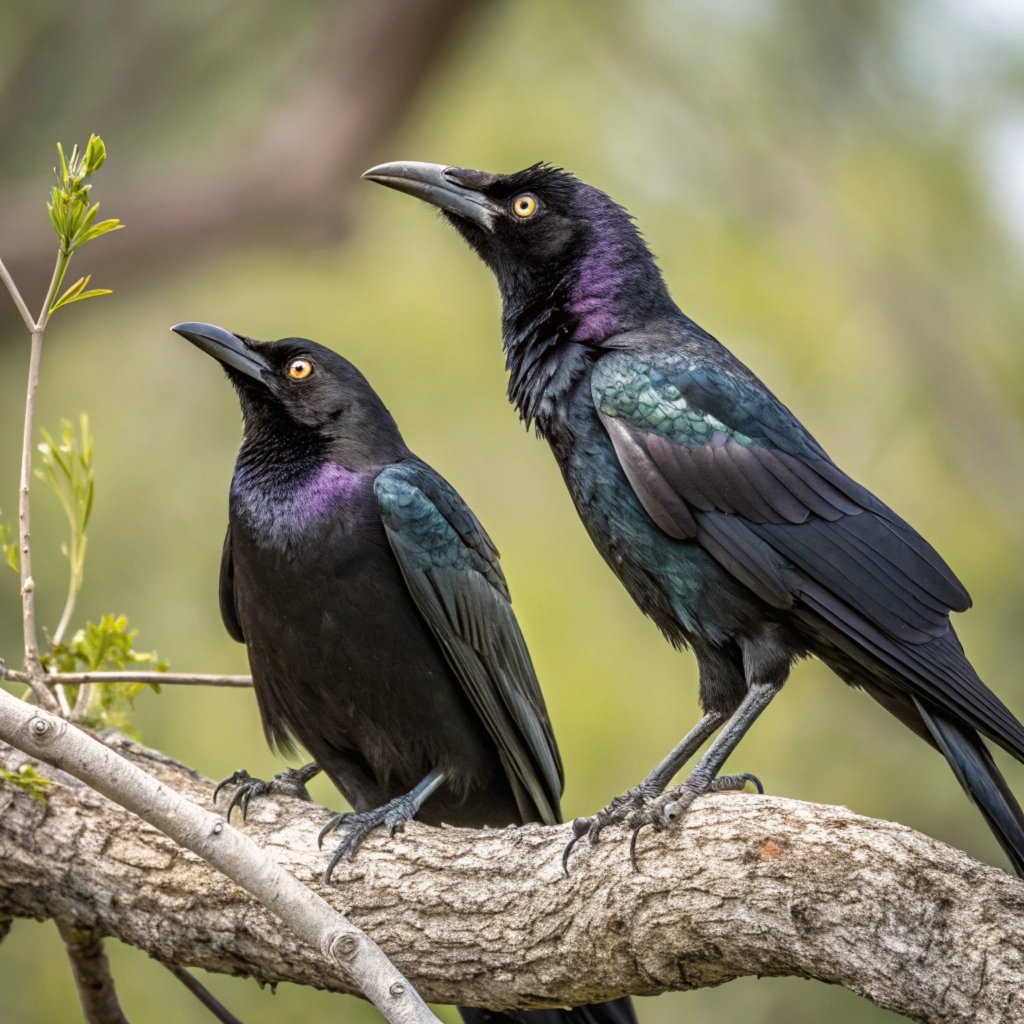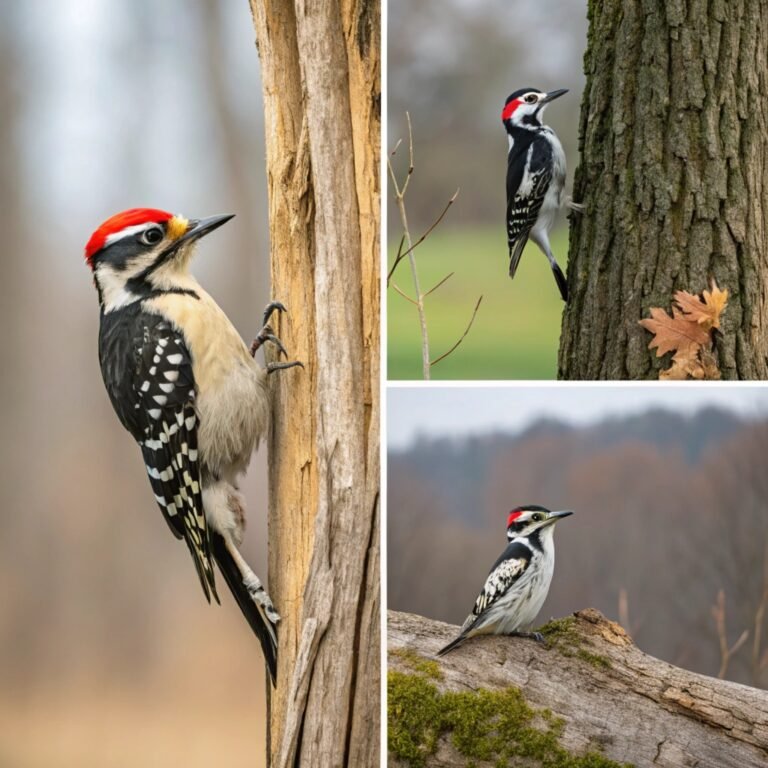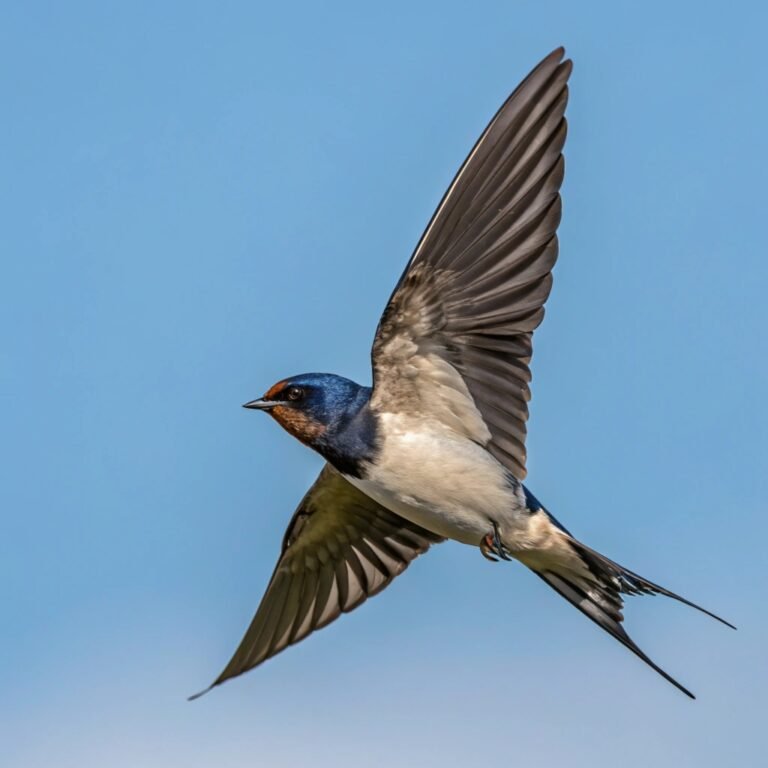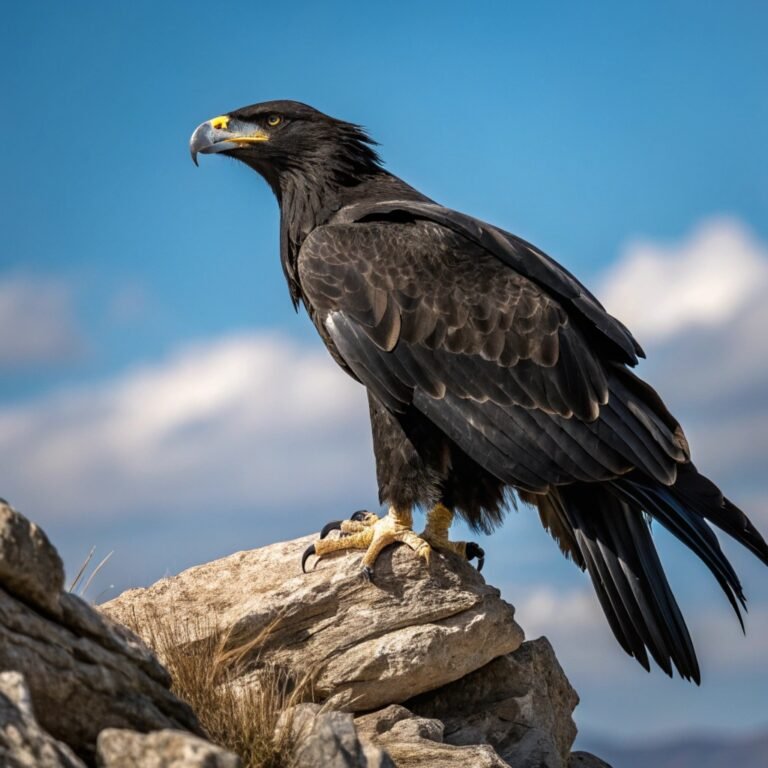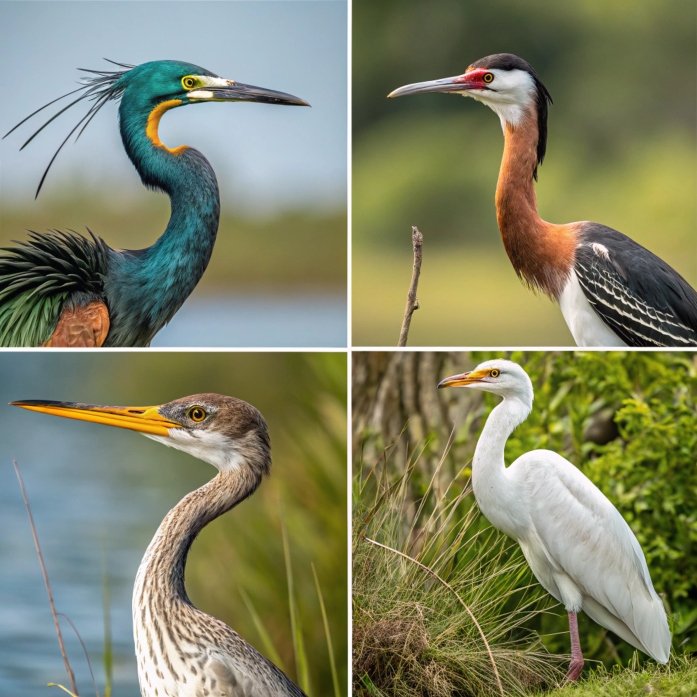The Fascinating World of Fish Crows: A Comprehensive Guide to These Intelligent and Adaptable Coastal Birds
The Fish Crow (Corvus ossifragus) is a captivating and often overlooked member of the corvid family.
This intelligent bird species, closely related to the American Crow, has carved out a unique niche in coastal and riverine ecosystems across the eastern United States.
In this comprehensive guide, we’ll explore the fascinating world of Fish Crows, delving into their distinctive characteristics, behaviors, habitats, and ecological roles.

Key Takeaways:
- Fish Crows are smaller than American Crows and have a more nasal voice
- They primarily inhabit coastal areas and river valleys
- These birds are highly adaptable and have expanded their range inland in recent years
- Fish Crows are omnivorous and have a diverse diet, including marine invertebrates and eggs of other birds
- They display remarkable intelligence and problem-solving abilities
- Fish Crows form strong social bonds and engage in cooperative behaviors
- Their population is increasing, despite challenges like West Nile Virus
- These birds play important roles in their ecosystems as seed dispersers and insect controllers
- Fish Crows have complex vocalizations and can mimic various sounds
- They are protected under the Migratory Bird Treaty Act but are still hunted in some states
- Fish Crows make excellent ambassador animals for environmental education programs
- Their presence in urban areas highlights the need for coexistence between humans and wildlife
Physical Characteristics: Distinguishing the Fish Crow
The Fish Crow bears a striking resemblance to its more common cousin, the American Crow, but possesses several distinctive features. Slightly smaller in size, the Fish Crow typically measures between 36-41 cm in length.
Its plumage is predominantly black with a glossy sheen that can appear blue or blue-green in certain lights. The underparts often display a subtle greenish tint.
One of the most notable differences is the Fish Crow’s bill, which tends to be slimmer and may feature a small, sharp hook at the tip.
Their eyes are dark brown, and they have a more slender overall appearance compared to American Crows.
When in flight or perched, Fish Crows may appear to have shorter legs.
These subtle differences can make visual identification challenging, especially at a distance, which is why their distinctive vocalizations are often the most reliable method for distinguishing Fish Crows from their American counterparts.
Habitat and Range: Coastal Dwellers Expanding Inland

Fish Crows are primarily associated with coastal and riverine habitats in the eastern and southeastern United States. Their traditional range extends along the Atlantic coast from New England to Florida and westward along the Gulf Coast to Texas.
These adaptable birds thrive in a variety of water-adjacent environments, including beaches, salt marshes, estuaries, and tidal flats.
Inland, they follow the courses of major rivers, inhabiting swamps and wooded areas near water bodies.
In recent decades, Fish Crows have demonstrated remarkable adaptability by expanding their range further inland and northward.
They have successfully colonized urban and suburban areas, often found in parks, golf courses, and residential neighborhoods with adequate tree cover.
This expansion has brought them into closer contact with human populations, leading to increased interactions and opportunities for observation.
During winter months, Fish Crows may gather in large flocks near reliable food sources such as landfills, agricultural fields, and estuaries, showcasing their ability to adapt to both natural and human-altered landscapes.
Diet and Feeding Behavior: Opportunistic Omnivores
The Fish Crow’s diet is remarkably diverse and opportunistic, reflecting its adaptability and intelligence. These birds are true omnivores, consuming a wide variety of food items depending on availability and season.
In coastal areas, their diet often includes marine invertebrates such as crabs, shrimp, and mollusks.
They are adept at foraging in shallow water, using their feet to pluck prey items from beneath the surface. Fish Crows also consume stranded fish and occasionally catch live fish in favorable conditions.
Inland, they feed on a variety of insects, berries, seeds, and nuts. One of their more controversial feeding habits is their predation on the eggs and nestlings of other bird species, including colonial waterbirds like herons, ibises, and terns.
This behavior has earned them a reputation as nest raiders, though it’s important to note that this is a natural part of their ecological role.
Fish Crows are also known to scavenge carrion and take advantage of human food sources, including garbage and agricultural crops.
Their feeding behavior is often social, with groups foraging together and using their intelligence to solve problems and access food resources.
Intelligence and Problem-Solving: Corvid Cognition in Action

Like their corvid relatives, Fish Crows exhibit remarkable intelligence and problem-solving abilities. These cognitive skills are evident in various aspects of their behavior, from foraging techniques to social interactions.
Fish Crows have been observed using tools to access food, a behavior that requires advanced cognitive processing. For example, they may use sticks or other objects to probe for insects or manipulate food items.
Their problem-solving abilities are particularly apparent in urban environments, where they learn to navigate human-made structures and exploit new food sources.
Fish Crows demonstrate excellent memory, remembering food locations and recognizing individual humans.
They are also capable of learning from each other, passing knowledge through social learning within their groups.
This intelligence extends to their vocalizations, with Fish Crows able to produce a variety of calls and even mimic sounds in their environment.
In captivity, Fish Crows have shown the ability to learn complex tasks and solve puzzles, further highlighting their cognitive capabilities.
This high level of intelligence makes them fascinating subjects for research and contributes to their success in adapting to changing environments.
Social Behavior: Community and Cooperation
Fish Crows are highly social birds that exhibit complex social behaviors. During the breeding season, they typically form monogamous pairs, working together to build nests, incubate eggs, and care for their young.
Outside of the breeding season, Fish Crows often gather in large flocks, particularly in winter when food resources are concentrated.
These flocks can number in the hundreds or even thousands, creating impressive spectacles as they move between roosting and feeding areas.
Within these groups, Fish Crows engage in various social activities, including allopreening (mutual grooming), which helps strengthen social bonds.
They also participate in cooperative behaviors, such as mobbing predators to drive them away from nesting areas or food sources.
This mobbing behavior often involves not just Fish Crows but also American Crows and other bird species, demonstrating their ability to work collectively for mutual benefit.
Fish Crows are known to be playful, engaging in aerial acrobatics and manipulating objects for seemingly no purpose other than enjoyment.
Their social nature and cooperative behaviors contribute to their success as a species and make them fascinating subjects for behavioral studies.
Breeding and Nesting: Coastal Family Life
The breeding season for Fish Crows typically begins in spring, with timing varying depending on location. Pairs work together to construct nests, usually placed high in trees near water bodies.
The nests are bulky structures made of sticks, twigs, and bark, lined with softer materials like grass, moss, and feathers.
Female Fish Crows typically lay 4-5 eggs that are dull blue-green to gray-green in color, blotched with brown and gray. Incubation, primarily performed by the female but sometimes assisted by the male, lasts about 16-18 days.
Both parents contribute to feeding the nestlings, which remain in the nest for approximately 3-4 weeks before fledging.
Even after leaving the nest, young Fish Crows often stay with their parents for several months, continuing to learn essential survival skills.
Fish Crows are known to be fiercely protective of their nests and young, actively defending against potential predators.
Their breeding success is influenced by various factors, including food availability, habitat quality, and human disturbance.
In some areas, Fish Crows may form loose breeding colonies, with multiple pairs nesting in close proximity, which can provide additional protection against predators.
Vocalizations: The Distinctive Sound of Fish Crows
One of the most reliable ways to identify a Fish Crow is by its distinctive vocalizations. Unlike the familiar “caw” of the American Crow, Fish Crows produce a more nasal, higher-pitched call often described as a “cah” or “aww” sound.
This unique vocalization is frequently likened to a person with a head cold trying to say “uh-uh.” Fish Crows have a diverse vocal repertoire, including various calls used in different social contexts.
They may produce softer, more conversational sounds when interacting with family members or flock mates.
During territorial disputes or when mobbing predators, their calls become louder and more insistent.
Fish Crows are also capable of mimicry, sometimes imitating the calls of other bird species or even mechanical sounds in their environment.
Their vocalizations play crucial roles in communication within their social groups, helping to maintain cohesion, warn of dangers, and coordinate activities.
The ability to recognize and interpret these calls is an essential skill for birdwatchers and researchers studying Fish Crow behavior and ecology.
Ecological Role: Balancing Act in Coastal Ecosystems
Fish Crows play a significant ecological role in the coastal and riverine ecosystems they inhabit. As omnivores with a diverse diet, they contribute to various ecological processes.
Their predation on invertebrates helps control populations of these species, potentially influencing the dynamics of intertidal communities.
By consuming fruits and nuts, Fish Crows act as important seed dispersers, contributing to the regeneration and spread of various plant species.
Their scavenging behavior, including the consumption of carrion and human food waste, aids in nutrient cycling and waste removal in ecosystems.
However, their predation on the eggs and nestlings of other bird species can have significant impacts on local bird populations, particularly for species already under pressure from habitat loss or other threats.
Fish Crows also serve as prey for larger predators, including raptors and mammals, thus forming an important link in coastal food webs.
Their presence and behavior can influence the distribution and behavior of other species, including potential competitors and prey.
Understanding the complex ecological roles of Fish Crows is crucial for managing coastal ecosystems and balancing conservation efforts across multiple species.
Adaptations to Urban Environments: City Life for Coastal Crows
Fish Crows have demonstrated remarkable adaptability to urban and suburban environments, expanding their range inland from coastal areas. This adaptation has led to significant changes in their behavior and ecology.
In urban settings, Fish Crows take advantage of artificial food sources, including garbage, pet food, and human handouts. They have learned to navigate human structures, often nesting on buildings or in urban trees.
Their intelligence allows them to solve problems presented by urban living, such as opening containers or avoiding traffic. Fish Crows in urban areas may exhibit different social behaviors, forming larger flocks and becoming more tolerant of human presence.
Their breeding seasons may be altered in urban environments, with earlier nesting times due to increased food availability and warmer temperatures.
While this adaptability has allowed Fish Crows to thrive in human-dominated landscapes, it also presents challenges, including potential conflicts with humans and exposure to urban pollutants.
Studying the urban ecology of Fish Crows provides valuable insights into wildlife adaptation to human-altered environments and can inform urban wildlife management strategies.
Conservation Status and Threats: Thriving Despite Challenges
Currently, the Fish Crow is listed as a species of Least Concern by the International Union for Conservation of Nature (IUCN). Their population has shown a slight increase between 1966 and 2015, according to the North American Breeding Bird Survey.
This positive trend is partly due to their adaptability and range expansion. However, Fish Crows face several threats.
The West Nile Virus outbreak in the early 2000s significantly impacted crow populations, including Fish Crows, though their numbers have since rebounded.
Habitat loss and degradation, particularly in coastal areas due to development and sea-level rise, pose ongoing challenges.
While protected under the Migratory Bird Treaty Act, Fish Crows are still hunted in some states due to their perceived status as pest species.
Climate change may affect their distribution and food sources, particularly in coastal habitats.
Conservation efforts for Fish Crows often focus on habitat protection and management, especially in coastal areas.
Their success in urban environments highlights the importance of creating wildlife-friendly urban spaces.
Monitoring Fish Crow populations and studying their responses to environmental changes are crucial for informing future conservation strategies.
Research and Studies: Unveiling Crow Cognition
Scientific research on Fish Crows has provided fascinating insights into their behavior, ecology, and cognitive abilities.
Studies have focused on various aspects of their lives, including their problem-solving skills, social behavior, and adaptations to urban environments.
Researchers have conducted experiments to test their tool use capabilities, memory, and learning abilities. For example, studies have shown that Fish Crows can recognize individual human faces and remember the locations of food sources over extended periods.
Their vocalizations have been analyzed to understand their complex communication systems and potential for mimicry.
Ecological studies have examined their role in seed dispersal and their impacts on other bird species through nest predation.
Research on their urban ecology has revealed how they adapt to city life, including changes in diet, nesting behavior, and social structures.
Genetic studies have helped clarify their relationship to other crow species and track their population movements.
Ongoing research continues to uncover new aspects of Fish Crow biology and behavior, contributing to our understanding of avian intelligence and adaptability.
Fish Crows as Ambassador Animals: Educating the Public
Fish Crows have proven to be excellent ambassador animals in environmental education programs.
Their intelligence, adaptability, and close association with human environments make them ideal subjects for teaching about urban ecology and human-wildlife interactions.
Many wildlife centers and educational institutions use Fish Crows to demonstrate avian behaviors, problem-solving skills, and the importance of coastal ecosystems.
These programs often highlight the cognitive abilities of crows, showcasing behaviors like tool use and puzzle-solving that captivate audiences.
Fish Crows can be trained to perform various behaviors, including recycling demonstrations, color recognition, and even painting, which helps engage the public in learning about bird intelligence.
Their presence in educational settings also provides opportunities to discuss conservation issues, such as habitat protection and the impacts of human activities on wildlife.
By fostering a connection between people and these common yet remarkable birds, Fish Crow ambassador programs help promote environmental awareness and encourage coexistence with urban wildlife.
Coexisting with Fish Crows: Tips for Harmonious Living
As Fish Crows continue to adapt to urban and suburban environments, learning to coexist with these intelligent birds becomes increasingly important. Here are some tips for harmonious living:
- Secure trash and pet food: Keep garbage in sealed containers and avoid leaving pet food outdoors to prevent attracting crows.
- Appreciate from a distance: Enjoy observing Fish Crows, but avoid feeding them directly to maintain their natural foraging behaviors.
- Create bird-friendly spaces: Plant native trees and shrubs to provide natural food sources and nesting sites for Fish Crows and other birds.
- Use humane deterrents: If crows become problematic, use non-harmful deterrents like reflective tape or decoy predators rather than harmful methods.
- Educate others: Share information about the ecological importance and fascinating behaviors of Fish Crows to foster appreciation and understanding.
By implementing these strategies, we can enjoy the presence of Fish Crows in our communities while minimizing potential conflicts.
FAQs
How can I tell a Fish Crow apart from an American Crow?
The most reliable way to distinguish a Fish Crow from an American Crow is by their vocalizations. Fish Crows have a more nasal, higher-pitched call that sounds like “uh-uh” or “cah,” compared to the American Crow’s familiar “caw.” Physically, Fish Crows are slightly smaller and have a slimmer bill, but these differences are often difficult to discern unless the birds are side by side.
Do Fish Crows really eat fish?
While their name suggests a fish-based diet, Fish Crows are actually omnivorous and opportunistic feeders. They do eat fish, particularly stranded fish or those in shallow waters, but their diet is much more diverse. It includes a wide variety of items such as crustaceans, insects, fruits, nuts, eggs of other birds, and even human food scraps.
Are Fish Crows intelligent?
Yes, Fish Crows are highly intelligent birds. Like other members of the corvid family, they display remarkable problem-solving abilities, tool use, and social learning. They can remember human faces, solve complex puzzles, and adapt quickly to new environments and food sources.
Do Fish Crows migrate?
Fish Crows are generally considered non-migratory, but some populations may make short-distance movements in response to food availability or weather conditions. They tend to be year-round residents in their coastal and riverine habitats.

Hello, I’m Emily Price, the founder of Birds Affection. As a passionate bird enthusiast and spiritual seeker, I’ve always been fascinated by the symbolic meanings and mystical connections between birds and our lives. On this website, I share my knowledge and insights on the spiritual significance of various bird species, exploring their roles as messengers, guides, and teachers. Through my writing, I aim to inspire and educate others on the profound wisdom and beauty that birds bring to our world. Join me on this journey as we delve into the enchanting realm of bird symbolism and discover the hidden meanings behind these magnificent creatures.

